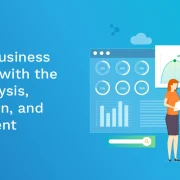
7 Best Practices in Educational Program Design
A professional instructional designer uses several educational program design best practices and effective strategies while designing their courses to help learners understand, grasp, and retain content efficiently. Following instructional design best practices is critical to driving maximum learning impact while also taking care of learners’ time and short attention spans. Further, it also ensures that knowledge transfer happens seamlessly, thus leaving a lasting impact on learners’ skill sets.
This blog aims to outline some of the best practices adopted by expert instructional designers to create the most effective educational program designs.
Table of Contents:
- 7 Best practices in educational program design
1. Set clear learning goals and objectives
2. Promote active learning strategies
3. Create 10-20 minute lessons
4. Gamify the content
5. Focus on reliable and measurable outcomes
6. Provide feedback to the learners - Final thoughts
7 Best practices in educational program design
Best practices in educational program design refer to proven methods and strategies used to create, implement, and evaluate programs that effectively support learning outcomes.
1. Set clear learning goals and objectives
As an instructional designer, it’s important to clearly explain the goals and objectives of the course or the educational program you’re creating. Clearly understanding the overall learning requirements, the audience who needs to take the training, and how the training is supposed to benefit learners should be established before you begin to work on the course design.
You must know what you want your learners to achieve at the end of the course. Remember that any content that does not align with a learning objective, course goal, or the desired learning outcome is irrelevant information. It is something that students do not need to know to develop required skill sets, knowledge, or to be successful.
2. Promote active learning strategies
When it comes to online learning specifically, it is often self-paced and self-directed, making active learning an important aspect for engaging with students, keeping them focused, and improving their motivation.
Active learning strategies help address various learning needs and cultivate a strong sense of community among students. Some of the active learning strategies you can employ here include-
- Connecting lessons to the real world to make the course material and overall educational program design more relevant to the participants
- Incorporating more interactivity into your courses, such as simulations, quizzes, polls, exercises, and drag-and-drop activities
- Facilitating active collaboration by either inviting learners to share their ideas/notes or generating a discussion prompt for everyone to participate in a discussion
3. Create 10-20 minute lessons
Breaking down the content into 10-20 minutes short lessons is an excellent way to help learners stay focused on the topic while learning. Adopting such a microlearning approach of breaking your content into smaller, more manageable chunks makes it easier for your learners to fit it into their schedules, along with making it more accessible and easier to consume. While designing the course, make sure to review your content and consider ways to break it down into separate topics and sub-topics.
4. Gamify the content
Gamification refers to the application of gaming mechanics to non-gaming environments to make difficult tasks more palatable.
Some of the common game mechanics you can include in your educational program include points, badges, leaderboards, and levels. Incorporating these game elements while designing the courses makes learning more fun, engaging and also enables you to tap into some powerful human emotions.
Learners in any scenario love to compete against others and get rewards. It also gives you several indicators of learner progress and makes the overall learning experience more engaging and effective.
5. Focus on reliable and measurable outcomes
It is important to accurately and effectively gauge learner performance by making learner engagement and performance data the heart of your educational program design process.
Some of the questions that can help you at this stage include-
- What exactly are you teaching and why?
- How will you know that your learners have met the desired level of mastery?
- What is your instructional goal, and what your learner’s participants will be able to do differently or what they will know that they didn’t know before?
Apart from this, take advantage of a combination of various multimedia elements to keep your learners engaged and focused on the content. For instance, using a short, concise and relevant video clip to reinforce a concept/topic is much more impactful as compared to static graphics and on-screen text.
6. Provide feedback to the learners
Providing clear and consistent feedback to the learner is just as important as the course design itself. It is also important to remember that feedback should be quick and explanatory in nature.
For instance, if a learner selects a correct option, the feedback shouldn’t simply say ‘that’s correct!’ Instead, it should offer a brief explanation of why it is correct, which helps to reinforce the key concepts of the topic.
On the contrary, if the learner selects an incorrect option, the feedback, instead of just saying ‘Sorry, that’s incorrect,’ should explain why the answer is wrong.
Final thoughts
Designing an educational program can be a challenging task for instructional designers. However, there are things that instructional designers can do to make learning programs more impactful. By following the above-mentioned best practices, you can make a real difference in learning.
The key here is to start by thoroughly assessing your audience and clearly establishing their needs. This will allow you to fine-tune your program design until it’s perfectly optimized for learners. Once done, all you need to do is to craft active learning experiences and ensure that your content is easily accessible on all digital devices, and use various game mechanics to incentivize your participants into action.

Senior Vice President – Business Development
at Hurix Digital, with over 25 years of experience in EdTech and workforce learning. He excels in business development, customer relationship management, and scaling digital learning solutions, driving global growth through innovative content, simulations, and AI‑driven training offerings




